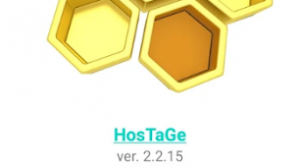[sc name=”ad_1″]
NFCGate is an Android application meant to capture, analyze, or modify NFC traffic. It can be used as a researching tool to reverse engineer protocols or assess the security of protocols against traffic modifications.
Notice
This application was developed for security research purposes by students of the Secure Mobile Networking Lab at TU Darmstadt. Please do not use this application for malicious purposes.
Features
- On-device capture: Captures NFC traffic sent and received by other applications running on the device.
- Relay: Relays NFC traffic between two devices using a server. One device operates as a “reader” reading an NFC tag, the other device emulates an NFC tag using the Host Card Emulation (HCE).
- Replay: Replays previously captured NFC traffic in either “reader” or “tag” mode.
- Clone: Clones the initial tag information (e.g. ID).
- pcapng export of captured NFC traffic, readable by Wireshark.
Requirements for specific modes
- NFC support
- Android 4.4+ (API level 19+)
- EdXposed or Xposed: On-device capture, relay tag mode, replay tag mode, clone mode.
- ARMv8-A, ARMv7: Relay tag mode, replay tag mode, clone mode.
- HCE: Relay tag mode, replay tag mode, clone mode.
Usage
Building
- Initialize submodules:
git submodule update --init - Build using Android Studio or Gradle
Operating Modes
As instructions differ per mode, each mode is described in detail in its own document in doc/mode/:
Pcapng Export
Captured traffic can be exported in or imported from the pcapng file format. For example, Wireshark can be used to further analyze NFC traffic. A detailed description of the import and export functionality is documented in doc/pcapng.md.
Compatibility
NFCGate provides an in-app status check. For further notes on compatibility see the compatibility document.
Known Issues and Caveats
Please consider the following issues and caveats before using the application (and especially before filing a bug report).
NFC Stack
When using modes, that utilize HCE, the phone has to implement the NFC Controller Interface (NCI) specification. Most of the phones should implement this specification when offering HCE support.
Confidentiality of Data Channel (relay)
Right now, all data in relay mode is sent unencrypted over the network. We may or may not get around to implementing cryptographic protection, but for now, consider everything you send over the network to be readable by anyone interested, unless you use extra protection like VPNs. Keep that in mind while performing your own tests.
Compatibility with Cards (relay, replay, clone)
We can only proxy tags supported by Android. For example, Android no longer offers support for MiFare classic chips, so these cards are not supported. When in doubt, use an application like NFC Tag info to find out if your tag is compatible. Also, at the moment, every tag technology supported by Android’s HCE is supported (A, B, F), however NFC-B and NFC-F remain untested. NFC-A tags are the most common tags (for example, both the MiFare DESFire and specialized chips like the ones in electronic passports use NFC-A), but you may experience problems if you use other tags.
Compatibility with readers (relay)
This application only works with readers which do not implement additional security measures. One security measure which will prevent our application from working in relay mode is when the reader checks the time it takes the card to respond (or, to use the more general case, if the reader implements “distance bounding”). The network transmission adds a noticeable delay to any transaction, so any secure reader will not accept our proxied replies.
This does not affect other operating modes.
Android NFC limitations (relay, replay)
Some features of NFC are not supported by Android and thus cannot be used with our application. We have experienced cases where the NFC field generated by the phone was not strong enough to properly power more advanced features of some NFC chips (e.g. cryptographic operations). Keep this in mind if you are testing chips we have not experimented with.
Publications and Media
This application was presented at the 14th USENIX Workshop on Offensive Technologies (WOOT ’20). An arXiv preprint can be found here.
An early version of this application was presented at WiSec 2015. The extended Abstract and poster can be found on the website of one of the authors. It was also presented in a brief Lightning Talk at the Chaos Communication Camp 2015.
Reference our Project
Any use of this project which results in an academic publication or other publication which includes a bibliography should include a citation to NFCGate:
@inproceedings {257188,
author = {Steffen Klee and Alexandros Roussos and Max Maass and Matthias Hollick},
title = {NFCGate: Opening the Door for {NFC} Security Research with a Smartphone-Based Toolkit},
booktitle = {14th {USENIX} Workshop on Offensive Technologies ({WOOT} 20)},
year = {2020},
url = {https://www.usenix.org/conference/woot20/presentation/klee},
publisher = {{USENIX} Association},
month = aug,
}
License
Copyright 2015-2020 NFCGate Team
Licensed under the Apache License, Version 2.0 (the "License");
you may not use this file except in compliance with the License.
You may obtain a copy of the License at
http://www.apache.org/licenses/LICENSE-2.0
Unless required by applicable law or agreed to in writing, software
distributed under the License is distributed on an "AS IS" BASIS,
WITHOUT WARRANTIES OR CONDITIONS OF ANY KIND, either express or implied.
See the License for the specific language governing permissions and
limitations under the License.
Contact
Used Libraries
- xHook (Licensed under the MIT License)
- Xposed Bridge (Licensed under the Apache License v2.0)
- LibNFC-NCI (Licensed under the Apache License v2.0)
- Protobuf (Licensed under the modified BSD 3-Clause License)
- Android About Page (Licensed under the MIT License)
- Android Device Names (Licensed under the Apache License v2.0)
- Android Support library – preference v7 bugfix (Released into the public domain and partly licensed under the Apache License v2.0)
- Android Room (Licensed under the Apache License v2.0)
- Android Lifecycle (Licensed under the Apache License v2.0)
Credits
- ADBI: ARM and THUMB inline hooking
[sc name=”ad-in-article”]





















Add Comment